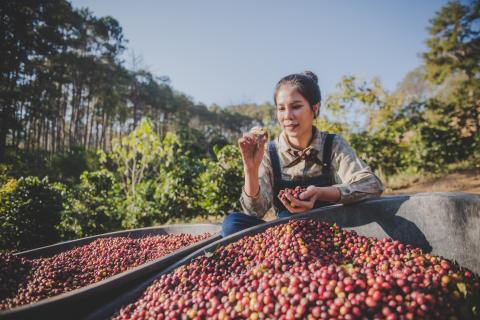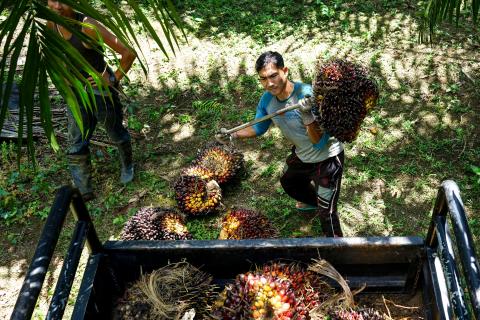Beyond the country benchmarks: What the EUDR low-risk classifications mean in practice
We recently covered the European Commission’s release of its first list of country benchmarks under the EU Deforestation Regulation (EUDR). Now that the classifications are out, what should companies do next?
On 22 May 2025, the European Commission published its first set of country risk classifications under the EUDR. These classifications are based on trends in deforestation and agricultural expansion, as well as legal frameworks and enforcement practices. Countries are placed into three categories: low risk, standard risk, or high risk. A country is classified as low risk when the Commission concludes that relevant products from that country are unlikely to be linked to deforestation.
One of the purposes of these benchmarks is to tailor due diligence obligations to actual risk levels – streamlining processes for low-risk sources while directing greater scrutiny towards higher risk areas.
Operators sourcing from countries classified as low risk can benefit from a ‘simplified’ due diligence procedure1. In practice, this means they are not required to fulfill the risk assessment and mitigation processes set out in Articles 10 and 11 of the regulation. However, this exemption applies to these aspects only.
“All other due diligence requirements remain unchanged – and this is something some stakeholders may not be fully aware of. Even when sourcing relevant products originating from a low-risk country, companies must still obtain geolocation data and other information.”
David Hadley
Regulatory Impact Programme Director at Preferred by Nature
Understanding ‘Low Risk’
In the words of the EUDR, a country is considered low risk when the benchmarking process concludes there is “sufficient assurance”2 that there will only be “exceptional” cases in the country where the production of commodities is linked to deforestation or forest degradation. Such cases would naturally prevent the relevant products derived from those commodities from being deforestation-free, in line with Article 3(a) of the Regulation.
The low-risk classification therefore has direct implications for companies placing such products on the EU market, or exporting them, as well as global suppliers to EU markets.
So, are all due diligence obligations lifted when souring from low-risk countries?
Short answer: No.
The simplified due diligence procedure under Article 13 does not remove all obligations. Operators are still required to meet the full set of information requirements outlined in Article 9, along with all other responsibilities.
What remains mandatory for low-risk countries
The EUDR due diligence framework consists of three core elements: information gathering, risk assessment, and risk mitigation. The simplified due diligence procedure affects only the second and third components. Operators sourcing from low-risk countries of production must still:
- Maintain a system of procedures and measures to meet all applicable requirements of the regulation
- Collect all information listed under Article 9(1), including all plot-level geolocations and the date or time of production
- Assess the risk of mixing and circumvention prior to implementing simplified due diligence
- Respond to substantiated concerns or credible information that points to a risk that the products they are sourcing are not EUDR-compliant. This may also require communicating the relevant information to a Competent Authority.
- Be prepared to conduct full due diligence, even though sourcing from a low-risk country of production. This would be required where mixing or circumvention risks are identified, or where credible information is contrasting with the low-risk status of the country.
- Submit a due diligence statement before placing products on the EU market
In short, low-risk does not mean zero-effort, as sourcing from low-risk countries of production, is not a guarantee of legal compliance.
Download our policy brief for more information.
A moving target
Country risk classifications are not fixed. The European Commission will update them periodically as more data becomes available, or as country conditions change. A revision is already anticipated in 2026, once updated deforestation data from the UN Food and Agriculture Organization (FAO) becomes available3.
This means Operators must remain vigilant and ready to adjust their due diligence processes accordingly.
If a sourcing country is reclassified from low to standard or high risk, Operators can no longer use the simplified procedure. This could happen relatively quickly, within a single update from the Commission, if updated data signals trending agriculture-driven deforestation within the country.
Companies with long-term sourcing relationships in affected regions may wish to engage with suppliers early and consider potential mitigation strategies ahead of any changes in risk classifications.
What this means for Operators now
The release of the first country benchmark results provides a new layer of clarity for Operators, providing options for them to streamline their due diligence efforts when sourcing from countries of production classified as low-risk.
Rather than a shortcut to easy compliance, country benchmarks provide an indication of where scrutiny should be focused. However, with enforcement of the EUDR beginning 30 December 2025, and 30 June 2026 for some small and microenterprises, Operators must still ensure they can demonstrate robust systems across all required areas.
Ultimately, effective compliance will depend not just on monitoring risk classifications, but on building systems that are resilient and responsive, to meet the regulation’s core goal of placing only deforestation-free products on the EU market.
1. Article 13
2. Article 29(1)(b)
3. FAO Global Forest Resources Assessment 2025, due to be published later this year.
Looking for further clarity? Our policy brief offers a detailed look at the obligations that remain for Operators sourcing from low-risk countries.
For more information:
- Visit our dedicated EUDR webpage
- Use our EUDR Scoping Tool to assess whether your business is affected
- Explore our Due Diligence Toolkit or get in touch with us




